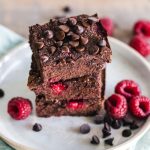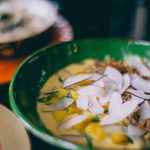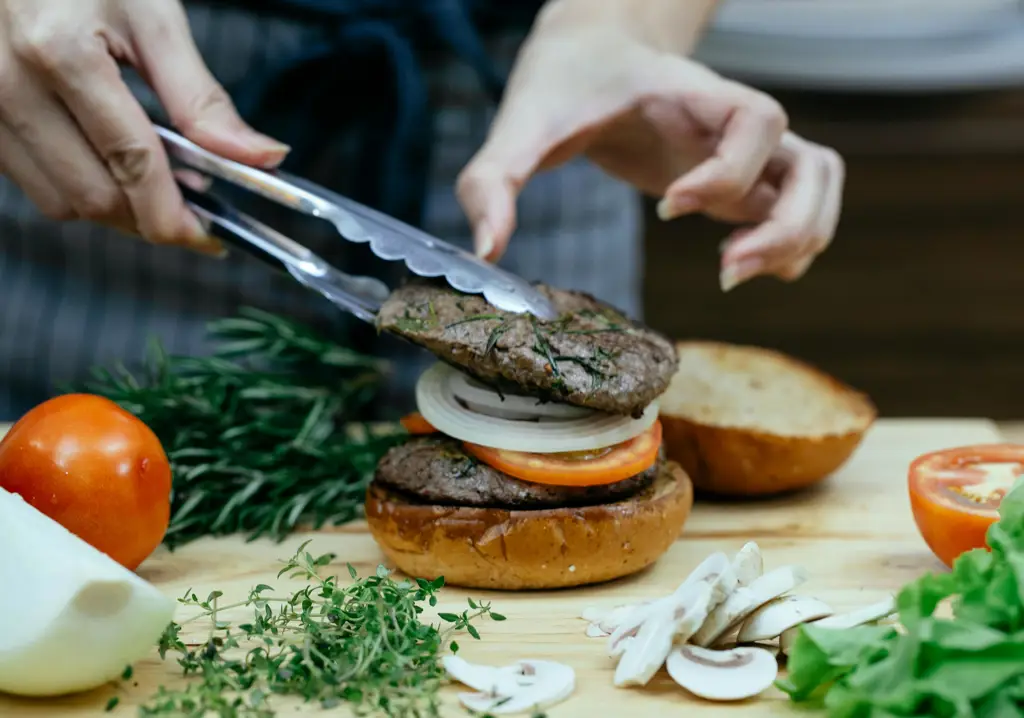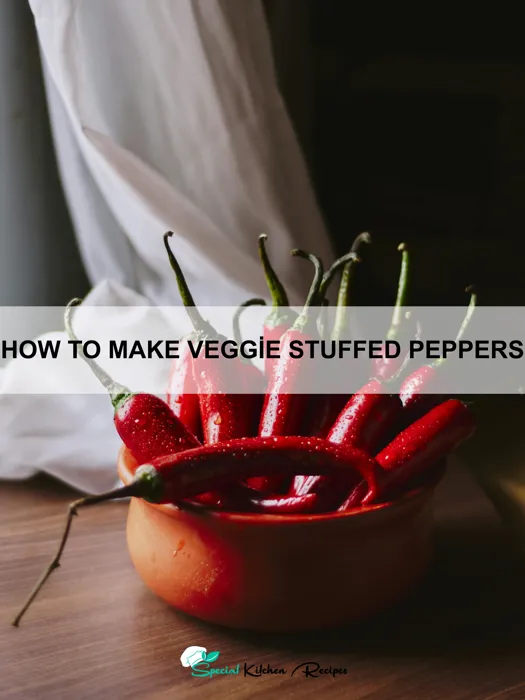The humble butternut squash, a winter staple in countless cuisines worldwide, boasts a surprisingly rich history. Originating in Central America, likely in the region encompassing modern-day Mexico and Guatemala, its cultivation predates the arrival of Europeans. While the exact timeline is debated, evidence suggests butternut squash, along with other cultivars of Cucurbita moschata, was domesticated thousands of years ago by indigenous populations. These early farmers carefully selected and bred varieties, contributing to the development of the sweet, nutty flavor and distinctive shape we recognize today. Archaeological findings frequently uncover butternut squash remains alongside other important crops, highlighting its crucial role in ancient Mesoamerican diets.
The journey of the butternut squash beyond the Americas is a testament to its adaptability and deliciousness. Spanish conquistadors introduced the squash to Europe in the 16th century, where it gradually gained popularity. However, its widespread adoption occurred much later, with significant growth in cultivation and consumption during the 20th century, particularly in North America. Today, the United States is among the leading producers of butternut squash, with annual production exceeding 100,000 tons in recent years. This impressive figure underscores its enduring appeal and its integration into modern agricultural practices.
Beyond its culinary significance, butternut squash has earned a place in various cultures’ traditions and folklore. In some Native American communities, it holds symbolic meaning, representing abundance and the bounty of the harvest. While specific traditions vary across different tribes and nations, the squash frequently features in ceremonial feasts and harvest celebrations. Furthermore, its vibrant orange hue, rich in beta-carotene, has been associated with warmth, vitality, and good health across numerous cultures. This association contributes to its continued popularity as a visually appealing and nutritious food choice in countless dishes, from simple roasted wedges to elaborate soups and pies.
The nutritional profile of the butternut squash further contributes to its enduring appeal. A rich source of vitamins A and C, as well as fiber and potassium, it is frequently touted for its health benefits. Its naturally sweet flavor also makes it a versatile ingredient, appealing to both adults and children. Therefore, the butternut squash’s journey, from its ancient origins in the Americas to its prominent position on modern dinner tables, illustrates not only its culinary versatility but also its enduring cultural and nutritional significance.
Ingredients and Measurements
This recipe for Roasted Butternut Squash yields approximately 4 servings of deliciously tender and flavorful squash. The ingredient list is simple, focusing on letting the natural sweetness of the butternut squash shine. However, the quality of your ingredients will significantly impact the final result. Choose a butternut squash that feels heavy for its size and has firm, unblemished skin. A lighter squash may indicate it’s not as ripe and flavorful.
Butternut Squash: 1 medium (approximately 2-3 pounds). The size of your squash will dictate the overall cooking time. A smaller squash will roast faster than a larger one. If using a larger squash, you may need to increase the roasting time slightly or cut it into smaller pieces for even cooking. Weighing your squash is the most accurate method; however, if you’re estimating, a medium butternut squash roughly translates to 2-3 pounds.
Olive Oil: 2 tablespoons (30ml). Use a high-quality extra virgin olive oil for the best flavor. The oil helps to crisp the skin of the squash and adds richness. You can adjust the amount slightly depending on your preference and the size of your squash. If your squash is exceptionally large, you may need a bit more oil to ensure even coating.
Maple Syrup: 1 tablespoon (15ml). This adds a touch of sweetness that beautifully complements the butternut squash’s natural flavor. Avoid using corn syrup or other artificial sweeteners; the delicate flavor of maple syrup is key here. You can adjust the amount depending on your preference for sweetness. If your squash is already quite sweet, you may choose to reduce the maple syrup.
Salt: 1 teaspoon (5g). Sea salt or kosher salt are preferred for their larger crystals, which distribute more evenly and provide a less intense salty flavor than table salt. Don’t be afraid to adjust the salt to your liking. Taste the squash before serving and add more if needed.
Black Pepper: 1/2 teaspoon (2g). Freshly ground black pepper is always best. It adds a subtle hint of spice that balances the sweetness of the squash. Again, adjust the amount according to your taste preferences. Some might prefer a more peppery flavor.
Optional Ingredients: For added flavor complexity, consider adding other spices such as cinnamon (1/2 teaspoon), nutmeg (1/4 teaspoon), or ginger (1/4 teaspoon). You can also add a sprinkle of herbs like rosemary or thyme for an earthy aroma. Experiment with different flavor combinations to find your perfect roasted butternut squash recipe.
Important Note: These measurements are guidelines. The best way to achieve optimal results is to adjust the ingredients according to your taste and the size of your butternut squash. Don’t be afraid to experiment and find what works best for you!
Equipment List
Roasting butternut squash requires a relatively simple set of equipment, but the right tools can significantly impact the outcome. Choosing the correct size and type of pan, for instance, will determine how evenly your squash cooks and how much space you have to maneuver. Let’s delve into the specifics.
Baking Sheet or Roasting Pan: This is your primary cooking vessel. A large, heavy-duty baking sheet (approximately 18 x 26 inches) is ideal for roasting a whole butternut squash, especially if you are working with a larger specimen. However, a shallower roasting pan (around 2-inch depth) offers better heat distribution and prevents the squash from steaming. If you’re working with smaller, halved or quartered squash, a standard 9×13 inch baking dish might suffice. Avoid using non-stick baking sheets for roasting at high temperatures, as the coating can degrade.
Chef’s Knife: A sharp chef’s knife (8-10 inches) is crucial for safely and efficiently preparing the butternut squash. A dull knife will make cutting difficult and increase the risk of injury. Always use caution when handling a sharp knife, keeping your fingers tucked away and using a firm, controlled cutting motion. A serrated knife can also be helpful for cutting through the tough skin.
Cutting Board: A sturdy cutting board, preferably made of wood or high-quality plastic, is essential to protect your countertops and provide a stable surface for cutting. Choose a cutting board that’s large enough to comfortably accommodate the butternut squash without overcrowding.
Measuring Cups and Spoons: Precise measurements are important for achieving the desired flavor balance. You’ll need standard measuring cups (1 cup, ½ cup, ¼ cup) and spoons (1 tablespoon, 1 teaspoon, ½ teaspoon) for accurately measuring ingredients like olive oil, salt, and any spices you choose to use. Invest in a good set of measuring tools for consistent results in the kitchen.
Vegetable Peeler: While you can use a knife to peel the butternut squash, a vegetable peeler is faster and more efficient. Choose a peeler with a sharp blade for easy peeling. Be mindful of the blade’s sharpness to avoid cutting yourself. A good quality peeler will make the process smoother and quicker.
Large Mixing Bowl: If you plan to toss the cut butternut squash with olive oil and spices before roasting, a large mixing bowl will be necessary. Choose a bowl that’s large enough to comfortably hold the cut squash pieces without overcrowding. A bowl with a non-stick surface can be helpful if you are not using cooking spray.
Oven Mitts or Pot Holders: Essential for safely handling hot baking sheets and pans. Always use oven mitts or pot holders to prevent burns when removing the roasted squash from the oven.
Optional Equipment: A food processor or blender can be helpful for making a puree from the roasted squash, but it’s not essential. Similarly, a pastry brush can be used to apply the olive oil to the squash, but your hands work just as well.
Preparation and Prepping the Butternut Squash
Preparing a butternut squash for roasting might seem daunting, but with the right approach, it’s surprisingly straightforward. This section will guide you through the process step-by-step, ensuring you achieve perfectly roasted squash every time.
First, select a butternut squash of approximately 2-3 pounds. Larger squashes will take longer to cook. Look for a squash that is firm, heavy for its size, and free from bruises or soft spots. Avoid squashes with blemishes or cuts, as these can indicate spoilage.
Begin by washing the squash thoroughly under cold running water. Use a vegetable brush to scrub away any dirt or debris clinging to the skin. Thorough cleaning is crucial for removing any potential pesticides or contaminants.
Next, we’ll cut the squash in half lengthwise. This requires a sharp, sturdy knife. A chef’s knife or a serrated knife works best. Place the squash on a cutting board and, using firm, even pressure, carefully cut the squash in half from stem to bottom. Be cautious when handling a sharp knife; always cut away from yourself. If your knife slips, consider using a sturdy kitchen towel to grip the squash more firmly.
Once halved, you’ll need to remove the seeds and stringy pulp from the center of each squash half. A large spoon or ice cream scoop works perfectly for this task. Scrape out the seeds and pulp thoroughly; leaving any behind can affect the flavor and texture of the roasted squash. Save the seeds if you wish to roast them separately – they make a delicious snack!
Now, it’s time to peel the squash. This can be done with a vegetable peeler or a sharp knife. For a vegetable peeler, simply peel the skin away in long, consistent strokes. If using a knife, carefully cut away the skin, being mindful of your fingers. Work slowly and deliberately to avoid cutting yourself. You can leave a thin layer of the skin on if you prefer a slightly more rustic presentation and added texture – this is entirely optional.
Finally, cut the butternut squash halves into approximately 1-inch thick slices or cubes. Consistent sizing ensures even cooking. If you prefer smaller, quicker-roasting pieces, cut into smaller cubes. Larger pieces will require a longer roasting time.
Once you have prepped your butternut squash, you’re ready to proceed with the roasting process. Remember to always prioritize safety when handling sharp knives and hot ovens.
Roasting the Butternut Squash
Roasting butternut squash brings out its natural sweetness and creates a wonderfully caramelized flavor. This process is surprisingly simple, but a few key steps will ensure perfectly roasted squash every time. We’ll be working with one medium-sized butternut squash (approximately 2-3 pounds), but you can easily adjust the quantities based on your needs and the size of your squash.
First, preheat your oven to 400°F (200°C). This ensures the squash cooks evenly and develops a beautiful golden-brown color. While the oven heats, prepare your butternut squash. Wash it thoroughly under cold running water, scrubbing away any dirt or debris. Pat it dry with a clean kitchen towel.
Next, cut the squash in half lengthwise. This is easiest done with a large, sharp chef’s knife. Use a sturdy cutting board to prevent slippage. Once halved, scoop out the seeds and stringy pulp using a spoon or melon baller. Discard the seeds (or save them for roasting separately – they make a delicious snack!). Make sure to remove all the stringy bits as they can be quite bitter.
Now, it’s time to prepare the squash for roasting. You have a couple of options here. You can either cut the squash into 1-inch thick half-moons or cubes, or leave the halves intact. Cutting into smaller pieces will ensure faster cooking, while leaving them whole will result in a more tender, less browned exterior. For this recipe, we recommend cutting into 1-inch thick half-moons for optimal caramelization and even cooking.
Once the squash is cut, toss it with 2 tablespoons of olive oil. Use a good quality extra virgin olive oil for the best flavor. Season generously with salt and pepper. About 1 teaspoon of salt and ½ teaspoon of black pepper should suffice for a medium-sized squash, but adjust to your taste. You can also add other seasonings at this stage, such as garlic powder, onion powder, paprika, or cinnamon for a warm, spiced flavor profile.
Arrange the butternut squash in a single layer on a large baking sheet. Don’t overcrowd the pan; this will prevent proper browning and steaming instead of roasting. If necessary, use two baking sheets. Roast for 30-40 minutes, or until the squash is tender and easily pierced with a fork. The cooking time will depend on the size and thickness of your squash pieces and your oven. Flip the pieces halfway through to ensure even cooking and browning.
Keep an eye on your squash as it roasts. If it starts to brown too quickly, reduce the oven temperature slightly. Once cooked, remove the baking sheet from the oven and let the squash cool slightly before serving. You can enjoy it as is, or use it as a base for soups, salads, or other dishes. Enjoy your perfectly roasted butternut squash!
Seasoning and Flavoring Options for Roasted Butternut Squash
The beauty of roasted butternut squash lies in its versatility. While simply roasting it with salt and pepper yields delicious results, exploring different seasonings and flavor profiles can elevate your dish to new heights. The following suggestions offer a range of options to suit various tastes and preferences, from subtly sweet to intensely savory.
Basic Seasoning: For a classic approach, start with a simple combination of 1 teaspoon of salt and ½ teaspoon of freshly ground black pepper per medium butternut squash. This provides the essential foundation for enhancing the squash’s natural sweetness. Consider adding a pinch of garlic powder (¼ teaspoon) and onion powder (¼ teaspoon) for added depth of flavor.
Savory & Earthy: To amplify the earthy notes of the butternut squash, experiment with warming spices. A blend of 1 teaspoon smoked paprika, ½ teaspoon ground cumin, and ¼ teaspoon cayenne pepper (adjust to your spice preference) creates a wonderfully complex and smoky flavor profile. Adding a tablespoon of olive oil before seasoning helps the spices adhere to the squash and promotes even browning.
Sweet & Spicy: For a delightful balance of sweet and spicy, combine 1 tablespoon of maple syrup or honey with ½ teaspoon of ground cinnamon, ¼ teaspoon of ground ginger, and a pinch of cayenne pepper. This glaze caramelizes beautifully during roasting, resulting in a sweet and subtly spicy exterior. Remember to adjust the sweetness based on the ripeness of your squash; sweeter squash may require less added sugar.
Herby & Aromatic: Fresh herbs add a vibrant and aromatic dimension to roasted butternut squash. Try tossing cubed squash with 2 tablespoons of olive oil, 1 tablespoon of chopped fresh rosemary, 1 tablespoon of chopped fresh thyme, and a generous pinch of salt and pepper. The herbs infuse the squash with their fragrant oils during roasting, creating a delightful herbaceous flavor.
Mediterranean Flair: Embrace Mediterranean flavors by combining 1 tablespoon of olive oil, 1 teaspoon of dried oregano, ½ teaspoon of dried thyme, ½ teaspoon of garlic powder, and a squeeze of lemon juice. A sprinkle of crumbled feta cheese after roasting adds a salty tang and creamy texture. Consider adding some Kalamata olives for an extra burst of salty, briny flavor.
Important Considerations: Regardless of your chosen seasoning blend, always ensure the butternut squash is properly coated with oil before seasoning. This prevents sticking and promotes even roasting and browning. Don’t be afraid to experiment! Start with the suggested measurements as a guideline, but feel free to adjust them to your liking. Taste as you go and add more seasoning if needed. The key is to find a balance of flavors that complements the inherent sweetness of the butternut squash.
Pro Tip: Toasting the spices before adding them to the squash can intensify their flavor. Simply dry-roast the spices in a dry pan over medium heat for 1-2 minutes, stirring frequently, until fragrant.
Cooking Time and Temperature Guide: Roasted Butternut Squash
Roasting butternut squash brings out its natural sweetness and creates a delightful caramelization. However, achieving perfectly tender and flavorful squash depends heavily on getting the cooking time and temperature right. This guide provides detailed information to help you achieve butternut squash perfection, regardless of your chosen method – whole, halved, or cubed.
Factors Affecting Cooking Time: Several factors influence how long your butternut squash needs to roast. The size of the squash pieces is paramount; larger pieces require longer cooking times than smaller ones. The starting temperature of the squash also matters – a cold squash will take longer to roast than one that’s been brought to room temperature. Finally, your oven’s accuracy can subtly impact cooking times. Always monitor your squash closely towards the end of the cooking period.
Roasting a Whole Butternut Squash (approx. 3-4 lbs): For a whole squash, preheat your oven to 375°F (190°C). Pierce the squash several times with a fork to prevent steam buildup and potential bursting. Place the whole squash directly on the oven rack. Roasting time will vary depending on the size, but expect it to take approximately 60-90 minutes. Check for doneness by piercing the skin with a fork; it should pierce easily. If not, continue roasting in 15-minute increments.
Roasting Halved Butternut Squash: Halving the squash significantly reduces cooking time. Preheat your oven to 400°F (200°C). Cut the squash in half lengthwise, scoop out the seeds and stringy pulp, and place cut-side down on a baking sheet lined with parchment paper. This helps prevent sticking and makes cleanup easier. Roasting time for halved squash is typically 45-60 minutes, depending on the size of the halves. Again, check for doneness with a fork. The flesh should be easily pierced and tender.
Roasting Cubed Butternut Squash: Cubing the squash offers the fastest roasting time. Preheat your oven to 400°F (200°C). Peel, deseed, and cube the squash into approximately 1-inch pieces. Toss the cubes with olive oil (about 2 tablespoons per medium squash), salt, and pepper. Spread them in a single layer on a baking sheet. Roasting time for cubed squash is typically 25-35 minutes, depending on the size of the cubes and your oven. They should be tender and slightly caramelized.
Important Considerations:
- Don’t overcrowd the baking sheet: Overcrowding prevents proper air circulation, leading to steaming rather than roasting and uneven cooking.
- Use a meat thermometer: For the most precise results, especially with larger pieces, use a meat thermometer to check the internal temperature. The squash is done when it reaches an internal temperature of 200-210°F (93-99°C).
- Adjust cooking time as needed: Oven temperatures can vary, so always monitor your squash and adjust the cooking time accordingly. It’s better to slightly undercook than overcook.
- Seasoning: Don’t forget to season your butternut squash! A simple drizzle of olive oil, salt, and pepper is delicious, but you can also experiment with other herbs and spices like rosemary, thyme, sage, or cinnamon.
By following this guide and paying close attention to your squash, you’ll be able to roast perfectly tender and flavorful butternut squash every time.
Recommendations for Roasted Butternut Squash
Roasted butternut squash is a versatile and delicious side dish or ingredient that can be enjoyed in countless ways. To maximize its flavor and nutritional benefits, consider these recommendations:
Serving Suggestions: The possibilities are endless! Enjoy roasted butternut squash as a simple and satisfying side dish alongside your favorite protein, such as roasted chicken, grilled salmon, or pork tenderloin. Its sweetness complements savory dishes beautifully. It’s also fantastic in salads, adding a unique texture and flavor. Cube it and toss it into grain bowls with quinoa, farro, or brown rice, along with other roasted vegetables and a flavorful dressing. You can also use it as a base for hearty soups or stews, adding depth and richness. For a truly special treat, try it pureed into a creamy soup, or even incorporated into a pasta sauce for a unique twist on a classic.
Complementary Dishes: The earthy sweetness of roasted butternut squash pairs exceptionally well with a variety of flavors. Consider serving it with dishes featuring herbs like sage, rosemary, thyme, or even a sprinkle of chili flakes for a touch of heat. The nutty flavor also complements dishes with a hint of maple syrup, balsamic vinegar, or even a sprinkle of crumbled feta cheese. For a truly satisfying meal, consider pairing it with dishes that offer contrasting textures, such as crunchy nuts, seeds, or toasted breadcrumbs. A vibrant green salad with a citrus vinaigrette can also provide a refreshing counterpoint to the richness of the roasted squash.
Storage Conditions: Properly storing your roasted butternut squash is crucial to maintaining its quality and flavor. Allow the roasted squash to cool completely before storing. Then, transfer it to an airtight container and refrigerate it. It will keep for up to 3-4 days in the refrigerator. For longer storage, you can freeze the roasted squash. Allow it to cool completely, then place it in a freezer-safe bag or container. Frozen roasted butternut squash will last for up to 3 months. Remember to thaw it completely before reheating.
Nutritional Information (per 1 cup, roasted): Nutritional information can vary slightly depending on preparation methods and the size of the squash. However, a general estimate for a 1-cup serving of roasted butternut squash provides approximately: Calories: 100-120; Carbohydrates: 20-25g; Fiber: 4-5g; Vitamin A: Excellent Source; Vitamin C: Good Source; Potassium: Good Source. These are approximate values and should be considered a guideline. For precise nutritional information, consult a nutrition database using the specific recipe and ingredients used.
Important Note: Always ensure the butternut squash is thoroughly cooked before consuming. Undercooked butternut squash may contain harmful bacteria. When roasting, ensure the squash is tender and easily pierced with a fork. Enjoy your delicious and nutritious roasted butternut squash!





